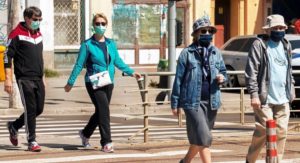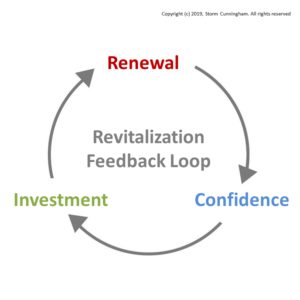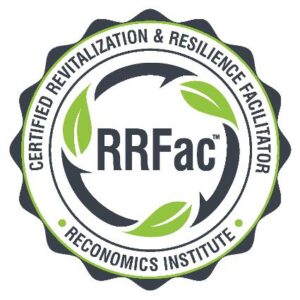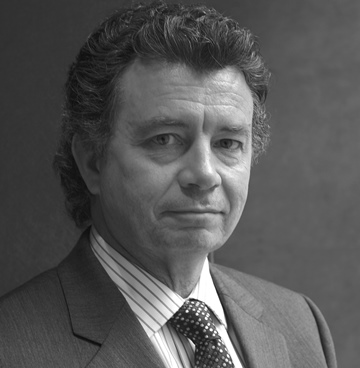This article was written by REVITALIZATION editor, Storm Cunningham.
Ever wonder why $100,000 comprehensive plans—and $100 million redevelopment projects—so often fail to revitalize cities? There are usually two reasons: 1) insufficient local renewal capacity, and 2) lack of a strategic renewal process.
Government, business and non-profit leaders—or even concerned citizens—can now quickly fix both of those problems via RECONOMICS Institute‘s new RE Accelerator program.
It’s marketed under the dubious-sounding headline “Buy your community a strong, green, fair economy for $1490.” Look a little closer, though, and the premise turns out to be a lot more sound than it initially appears.
The Problem
The pervasive, worldwide problem is that few public or private community leaders have any training in the proven processes for recovery, revitalization or resilience. In today’s crisis-ridden world, pretty much every community needs all three.
Every competent leader knows that the reliable production of anything—whether laundry detergent, farm crops, revenues, etc.—requires a process. Everyone, that is, except those in charge of producing recovery, revitalization and resilience. There, process goes out the window, and all we get are plans and projects…maybe with a visioning session thrown in to keep residents happy.
 Now, in the economic aftermath of COVID-19 shutdowns, the normal rates of failure and inefficiency are intolerable in local recovery efforts.
Now, in the economic aftermath of COVID-19 shutdowns, the normal rates of failure and inefficiency are intolerable in local recovery efforts.
Billions are being spent to re-start economies, and much of that funding is going into urban redevelopment and infrastructure renewal projects. Even a small increase in the productivity of this vast economic stimulus effort can have a hugely beneficial effect.
But few communities know the strategic renewal process than can double or triple the ROI (revitalization on investment) of such investments.
The Solution
The “universal” solution, then, is having a RRFac-qualified person in your city or region: someone who knows how to use and teach the proven strategic renewal process.
The presence of certified Revitalization & Resilience Facilitators in public agencies—as well as in local non-profits, foundations and corporation—helps address two dysfunctions found in most communities and regions:
- “perpetual planning syndrome,” whereby plans are endlessly written and updated, but never effectively funded and implemented; and
- “project mindset”, whereby vast amounts are spent on individual redevelopment projects, but community revitalization never manifests because there’s no ongoing program to capture momentum and inspire confidence on the local future (which is essential to attract residents, employers and investment).
That single act—having a local certified Revitalization & Resilience Facilitator—will thus help ensure that local recovery happens. But that’s not enough.
The Faster Solution
In a crisis situation—which now describes most communities—speed is of the essence. Having multiple Revitalization & Resilience Facilitators in public and private leadership is the key to making that recovery happen as soon as possible.
 The goal is to quickly reach the tipping point, whereby revitalization feeds on itself. The more we revitalize, the more we can revitalize. That’s because each completed renewal project increases confidence in the local future, and that confidence attracts additional residents, employers and investors.
The goal is to quickly reach the tipping point, whereby revitalization feeds on itself. The more we revitalize, the more we can revitalize. That’s because each completed renewal project increases confidence in the local future, and that confidence attracts additional residents, employers and investors.
Of course, this only happens if the community has an ongoing program to gather and perpetuate that momentum. Without that, a project might well have beneficial effects, but increasing confidence in the local future isn’t likely to be one of them.
The RE Accelerator program speeds that “tipping point” by certifying many folks, thus creating a critical mass of expertise.
Getting a critical mass of leaders on the same page is key to returning vitality to empty downtowns, factories, etc. About 90% of recovery, resilience and revitalization initiatives fail. The factors contributing to failure are many, but the three most common are:
- Lack of a strategic process to plan, design, fund and implement it;
- Insufficient public support; and
- Leaders and funding stuck in isolated solos, pulling in different directions while seldom focusing on renewing the place as a whole.
Having Revitalization & Resilience Facilitators in multiple agencies helps dissolve silos. They can be anyone who contributes in any way to improving your community or region: local government employees, volunteers, social entrepreneurs, etc. You can also include it in your employee training program, if you run a company or non-profit.
The easiest, least inexpensive path to a lasting solution to these challenges is to get many of those siloed leaders certified as Revitalization & Resilience Facilitators. The RE Accelerator program adds speed to that equation.
Can One Really “Buy” Recovery, Revitalization Or Resilience?
Given the “buy revitalization” marketing of the RE Accelerator program, it’s ironic that the core text of the RRFac training program, RECONOMICS, is quite critical of mayors’ fondness for trying to “buy” a new future for their city. The problem isn’t in the check-writing itself, however, but in what is purchased.
Wasted expenditures generally fall into one of these three categories:
- Expensive, “silver bullet” projects that often turn into white elephants;
- Comprehensive plans that are never implemented, but which look good at press conferences; and
- Feel-good reports that emphasize the city’s strengths, minimize its weakness, ignore its threats and fail to identify viable opportunities.
Instead, cities should purchase increased renewal capacity. The RE Accelerator program thus creates two attractive paradoxes: 1) the shortest path to resilient prosperity has the longest-term benefits, and 2) the smallest investment is the one with the largest potential payback.
But how can you help if you don’t actually want to become a certified Revitalization & Resilience Facilitators yourself? That’s where the RE Accelerator program comes in. You can speed the recover of of your community by helping others get certified as Revitalization & Resilience Facilitators by paying their tuition via RE Accelerator scholarships.
How RE Accelerator Works
You can accelerate your local recovery by helping multiple government, non-profit, academic and citizen leaders get certified as Revitalization & Resilience Facilitators. The RE Accelerator program makes that easier by chopping the tuition in half.
 With just $1490, you can quickly and easily underwrite the tuition for ten Revitalization & Resilience Facilitators (“RE Facilitators”). The normal tuition is $299. But the RE Accelerator program reduces that by 50%—to just $149—saving you $150 on each scholarship.
With just $1490, you can quickly and easily underwrite the tuition for ten Revitalization & Resilience Facilitators (“RE Facilitators”). The normal tuition is $299. But the RE Accelerator program reduces that by 50%—to just $149—saving you $150 on each scholarship.
The “catch” is that you must sponsor a minimum of 10 people. The RE Accelerator program comes in units of 10 for just $1490/unit. You can get as many of those scholarship units as your community or region warrants.
Revitalization & Resilience Facilitator scholarships are usually paid for by a mayor’s office or local government agency. But in this economic crisis, public budgets struggle just to provide basic services. Private citizens must often come to the rescue. So, you don’t need to be an official local leader to provide these scholarships via the RE Accelerator program.
You, as the sponsor—whether you’re a mayor, public agency, entrepreneur or philanthropist—simply pay the tuition in advance for the number of local folks you wish to have certified (in multiples of 10). You don’t need to know who they are in advance. The scholarships never expire, so there’s no time pressure to let folks know they are available.
Within one business day of enrolling in the RE Accelerator program, you’ll receive your own custom coupon code (all of your recipients use that same code) via email. The designated number of individuals can then use that code to enroll in the complete RRFac program free of charge.
 You simply share that code to the people you wish to sponsor, and your work is done.
You simply share that code to the people you wish to sponsor, and your work is done.
The recipients can be all in one community, one nation, one organization…or they can be spread all over the planet.
If you DO wish to become a Revitalization & Resilience Facilitators, you can use one of the credits to get yourself certified at half price, and give the remaining 9 credits to your fellow local leaders.
Besides improving local recovery, revitalization or resilience efforts, having at least ten Revitalization & Resilience Facilitators in your area qualifies it to be listed in REVITALIZATION’s annual RE Communities report (inaugural report in 2021). This is designed to help attract employers and real estate investors.
Together, let’s accelerate the attainment of resilient prosperity for all!
Photo of Storm Cunningham is by David Marcmann.

